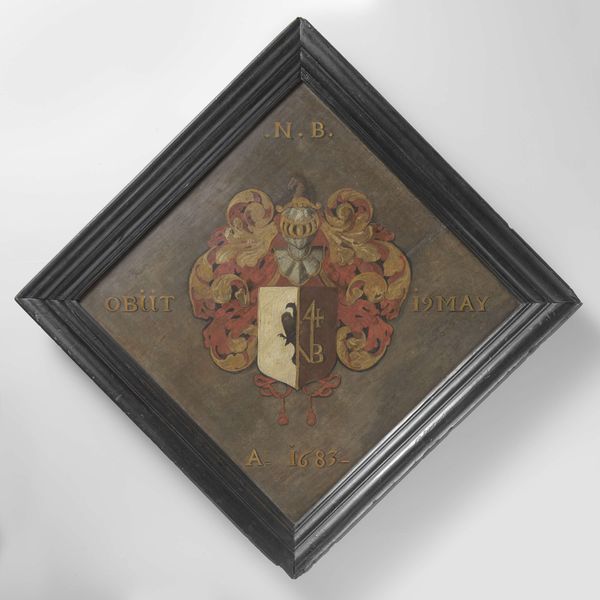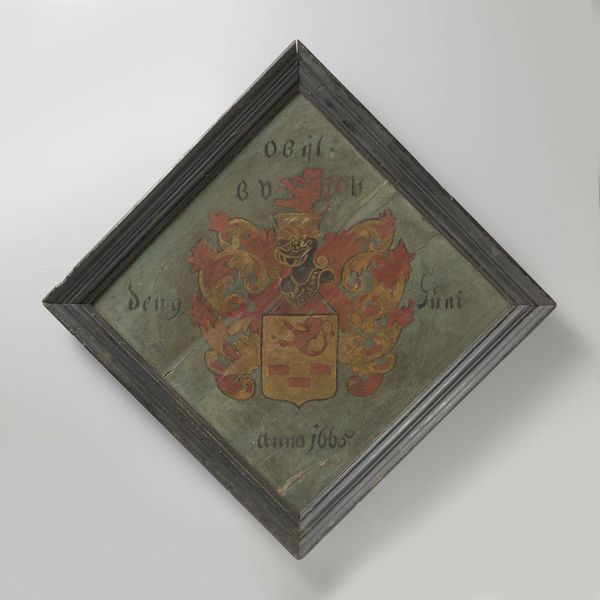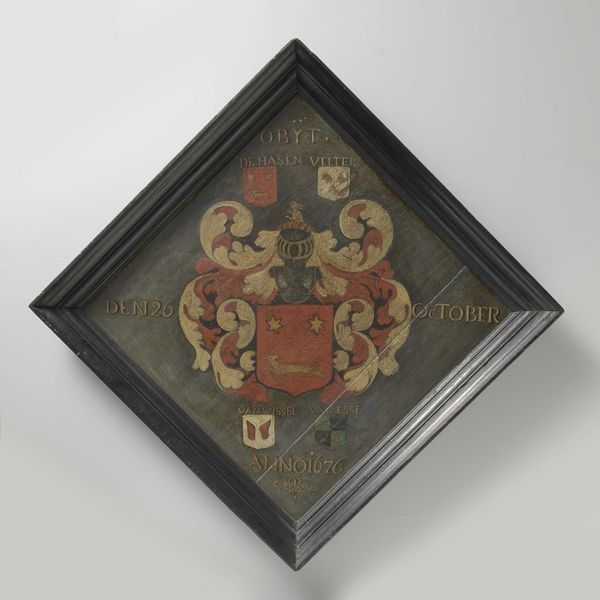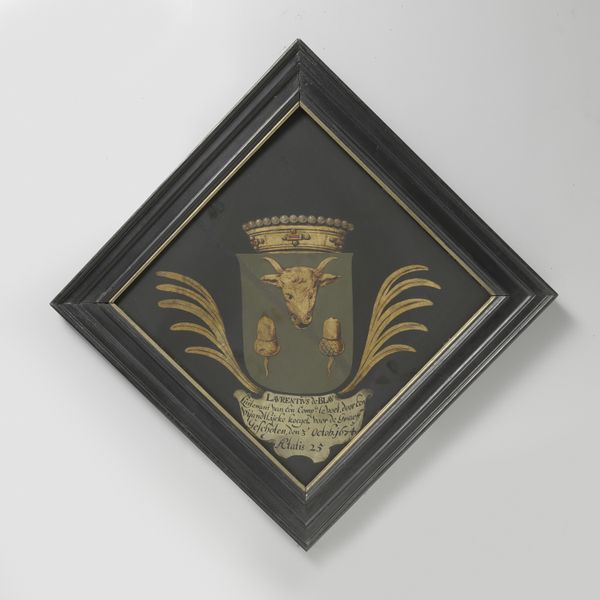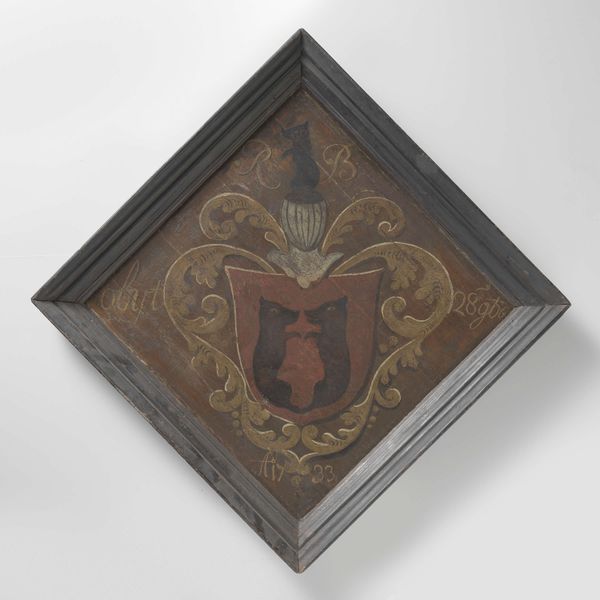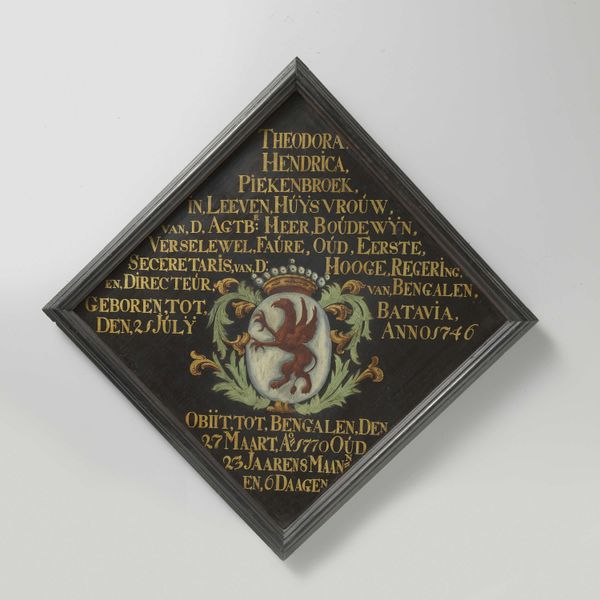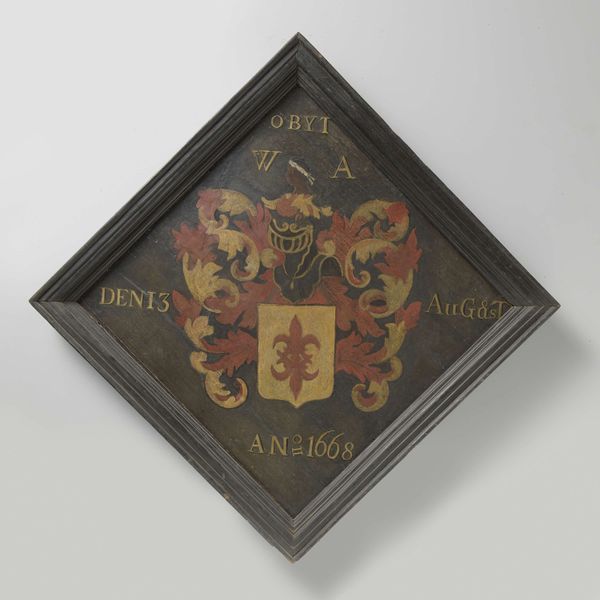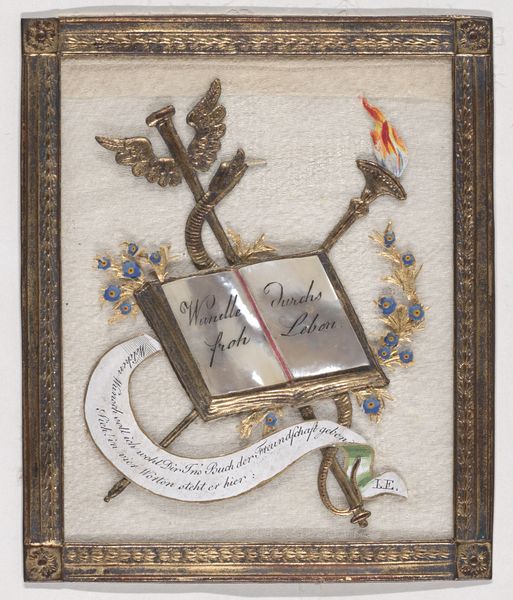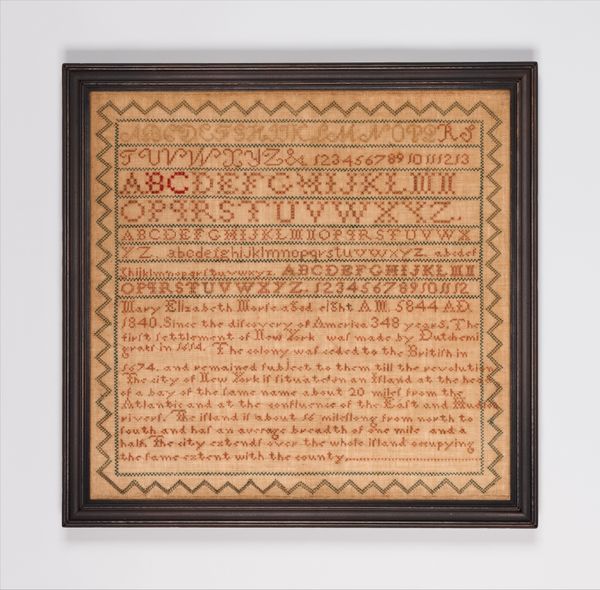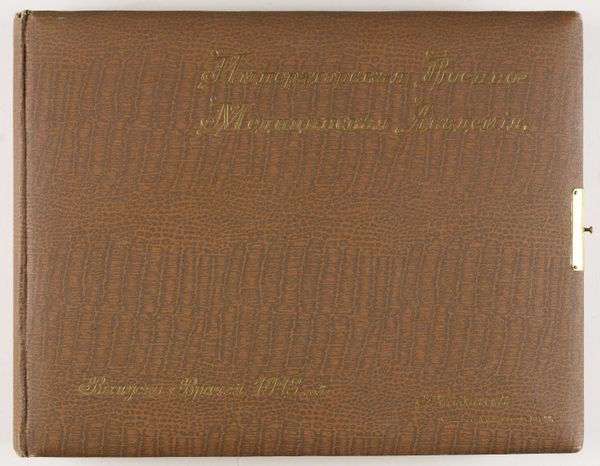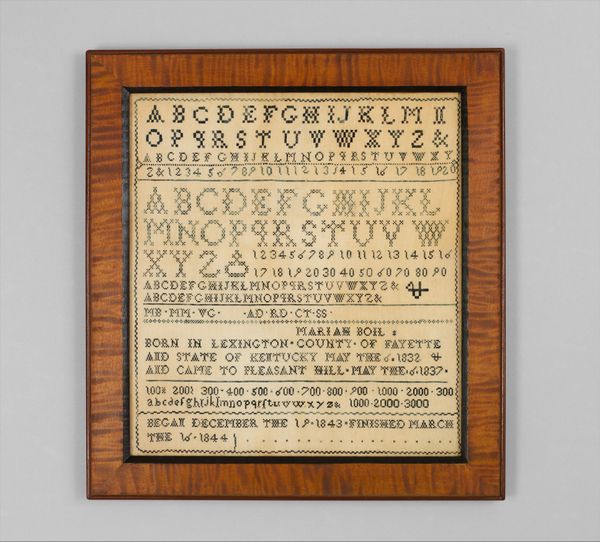
Grafbord van Pieter de Brueys (1750-83), opperkoopman en hoofd-administrateur te Chinsura after 1783
0:00
0:00
Dimensions: height 104 cm, width 103 cm, depth 6 cm
Copyright: Rijks Museum: Open Domain
Curator: The work before us, titled "Grafbord van Pieter de Brueys (1750-83), opperkoopman en hoofd-administrateur te Chinsura," which translates to "Gravestone of Pieter de Brueys, chief merchant and chief administrator in Chinsura," memorializes the man after his death in 1783. It is attributed to an anonymous artist. Editor: It's somber. Dark and rather...forbidding. Like finding a forgotten keepsake box in an attic. Curator: It offers us insight into Dutch mercantile history, specifically the Dutch East India Company’s activities. Brueys, as the chief merchant, represents that colonial network. Note how the symbols – the shield, the open book – try to convey authority and perhaps even erudition. But within the context of colonial exploitation, they become problematic signifiers of power. Editor: Hmm, you're right. That shield feels less like a badge of honor and more like…a claim. But still, something intimate peeks through the darkness. It is, after all, a deeply personal commemoration. And that odd tilted diamond shape somehow gives it an air of vulnerability. Curator: It is crucial to also examine the ways in which the narrative presented serves the interests of the Dutch East India Company and the role the deceased played in those pursuits. Who exactly benefitted from this administration and at whose cost? It pushes us to think about the complexities of commemoration in relation to colonial power structures. Editor: I see a very human attempt at remembrance clashing with this bigger story, one that feels more about the administrator’s rank than the actual man. Still, it prompts this curiosity. I just find myself wondering if the unknown artist sensed that unease too? If not intentionally, even unintentionally, don't you think? Curator: Indeed. Ultimately, the grave board serves as a reminder to look beyond individual portraits and analyze them within larger social, political, and economic power dynamics that shape individual experiences and collective memory. Editor: For me, I guess it's a haunting whisper across time – the shadow of a life, not quite fully captured or understood, reminding us there are always other voices left unheard, beyond what’s inscribed on the wood.
Comments
No comments
Be the first to comment and join the conversation on the ultimate creative platform.
